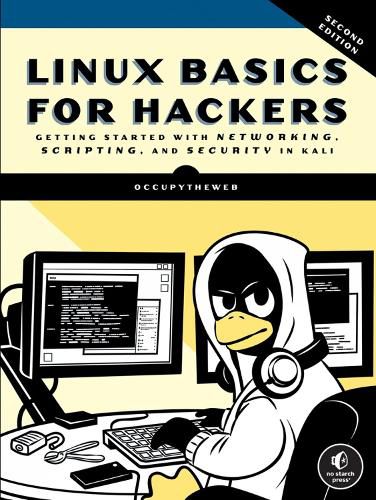Readings Newsletter
Become a Readings Member to make your shopping experience even easier.
Sign in or sign up for free!
You’re not far away from qualifying for FREE standard shipping within Australia
You’ve qualified for FREE standard shipping within Australia
The cart is loading…






A revised introduction to the Linux operating system for beginning hackers and penetration testers.
A revised introduction to the Linux operating system for beginning hackers and penetration testers.
If you're just getting started along the exciting path of hacking, cybersecurity, and pentesting, Linux Basics for Hackers is an excellent introduction. With Kali Linux, an operating system designed for digital forensics and penetration testing, you'll learn the basics of using Linux and acquire the tools and techniques you'll need to take control of a Linux environment.
First, you'll learn how to install Kali on a virtual machine and get an introduction to basic Linux concepts. Next, you'll tackle broader Linux topics like manipulating text, controlling file and directory permissions, and managing user environment variables. You'll then focus on foundational hacking concepts like security and anonymity and learn scripting skills with bash and Python.
Practical tutorials and exercises throughout will reinforce and test your skills as you learn how to-
Cover your tracks by changing your network information and manipulating the journalctl logging utility Write a tool to scan for network connections, and connect and listen to wireless networks Keep your internet activity stealthy using Tor, proxy servers, VPNs, and encrypted email Write a bash script to find potential attack targets over a range of IP addresses Use and abuse services like MySQL, the Apache web server, and OpenSSH Build your own hacking tools, such as remote spy cameras and password crackers
New to this edition- This second edition has been updated to address recent changes to Kali and Linux, including a more secure approach to root privileges, updates to Bluetooth and Linux logging functions, and a new chapter with advice on AI in cybersecurity.
Hacking is complex, and there is no single way in. Why not start at the beginning with Linux Basics for Hackers?
$9.00 standard shipping within Australia
FREE standard shipping within Australia for orders over $100.00
Express & International shipping calculated at checkout
Stock availability can be subject to change without notice. We recommend calling the shop or contacting our online team to check availability of low stock items. Please see our Shopping Online page for more details.
A revised introduction to the Linux operating system for beginning hackers and penetration testers.
A revised introduction to the Linux operating system for beginning hackers and penetration testers.
If you're just getting started along the exciting path of hacking, cybersecurity, and pentesting, Linux Basics for Hackers is an excellent introduction. With Kali Linux, an operating system designed for digital forensics and penetration testing, you'll learn the basics of using Linux and acquire the tools and techniques you'll need to take control of a Linux environment.
First, you'll learn how to install Kali on a virtual machine and get an introduction to basic Linux concepts. Next, you'll tackle broader Linux topics like manipulating text, controlling file and directory permissions, and managing user environment variables. You'll then focus on foundational hacking concepts like security and anonymity and learn scripting skills with bash and Python.
Practical tutorials and exercises throughout will reinforce and test your skills as you learn how to-
Cover your tracks by changing your network information and manipulating the journalctl logging utility Write a tool to scan for network connections, and connect and listen to wireless networks Keep your internet activity stealthy using Tor, proxy servers, VPNs, and encrypted email Write a bash script to find potential attack targets over a range of IP addresses Use and abuse services like MySQL, the Apache web server, and OpenSSH Build your own hacking tools, such as remote spy cameras and password crackers
New to this edition- This second edition has been updated to address recent changes to Kali and Linux, including a more secure approach to root privileges, updates to Bluetooth and Linux logging functions, and a new chapter with advice on AI in cybersecurity.
Hacking is complex, and there is no single way in. Why not start at the beginning with Linux Basics for Hackers?